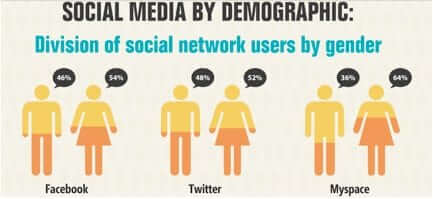There is a ton of information on the web today about how to run a successful Facebook advertising campaign, how to get more clicks on Twitter and how to determine the ROI of your social media efforts.
Today I want to change the direction of the conversation and talk about the consumer intelligence you’re gathering from those social engagements. There are clear-cut ways to use this intelligence to optimize your overall marketing strategy.
Here are three ways to get started:
1. Find new messaging that resonates with your audience.
Your social sites are great places to try new messaging with little monetary risk.
When launching a new offer/promotion to your social audience, track the number of shares for each specific message.
For example, if you are promoting a Facebook game you might send out two tweets like this:
A. Your friends will be so jealous when they see your shiny new sword. Get it today 40% off (link).
B. Slay Fire the Dragon with your sharp new sword. Get it today 30% off (link).
You can’t run a true a/b test on these messages using Twitter; However, if one or both of these tweets gets significant social traction, you might create other marketing campaigns using the same messaging. For example, you might buy paid ads using the popular messaging since it seemed to resonate with your audience.
2. Conduct market research for new products.
Thinking about launching a new product? Create some nice looking mockups of the product and pitch them to your social media audience. You can:
● Pin the mockups on Pinterest and see how many times it gets repinned.
● Add the picture to Facebook and see how many times its shared/commented on.
● Post the mockups to Tumblr and watch how many reblogs you get.

This tablet concept got over 200 reblogs/notes on Tumblr within an hour.
Be sure to drive traffic from your social networks to a dedicated landing page for the product concept (The Anatony of a Perfect Landing Page infographic). On the landing page start collecting email addresses.This allows you to ask your audience for additional feedback on the product, and also let them know when/if the product launches!
3. Find insights on different consumer segments.
It’s very likely that the audience you connect with through your funny videos on YouTube is different than the one you connect with on Pinterest. Perhaps you have a mostly male audience on one platform and a mostly female audience on another. Or perhaps you’re connecting with a younger demographic on one network and an older one on another. Whatever the case may be, always tailor your message to the demographic you’re speaking with.
For more demographic information see: Social Media by Demographic Infographic
By analyzing engagement, click-through rates and conversion rates, you’ll garner good insight on what seems to interest your various consumer demographic segments. Use this information to not only further optimize your social media messages, but also use it to tailor messages in other marketing channels.
For example, if a certain message works well with your female audience on Pinterest, you might use that same message in a print ad placed in a women’s interest magazine.
Social media intelligence isn’t just for social networks. It should help refine your entire marketing strategy!
4. BONUS PRO TIP: Keep track of all social media intelligence within your social CRM.
A social CRM (like Nimble) is software you use to track your relationship with customers/prospects to make them stronger. The core of a social CRM is the customer/prospect contact record. Tied to the contact record is your conversation history, their social media updates, lead score information, who they’ve spoken with in your company, any sales deals associated with the person and so much more.

Contact record view inside Nimble CRM (click to make the image larger).
Being able to see all the historical and real-time data associated with a consumer in one place allows you to create meaningful conversation each time you engage. After all, a relationship isn’t built off of one tweet or Facebook comment. It’s built through on-going, meaningful engagement.
Your social media campaigns generate all kinds of consumer intelligence, and your social CRM can store that information. What you do with it is up to you!
How are you using social media intelligence? Are you using it to fuel your entire marketing strategy?

